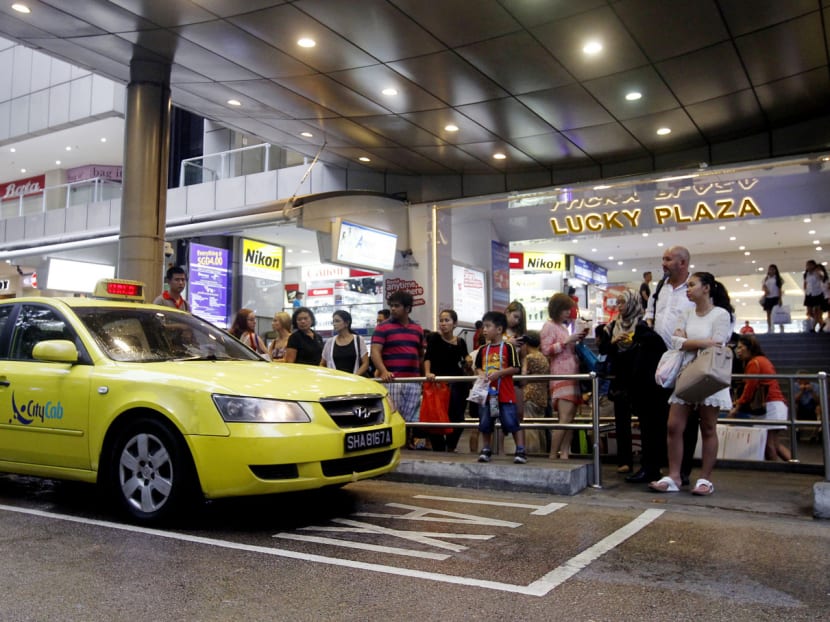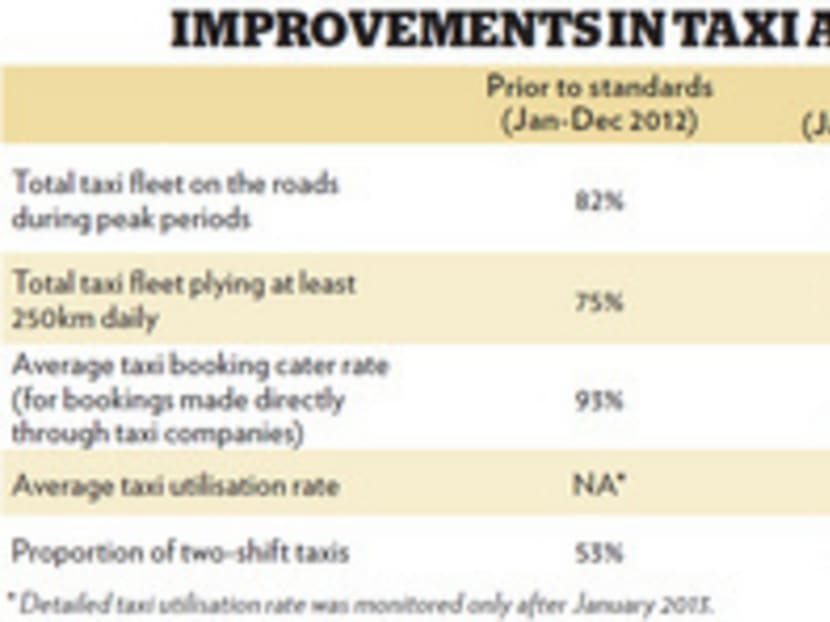Stricter taxi availability standards next year
SINGAPORE — Commuters can look forward to more taxis plying the roads during peak periods, with the Land Transport Authority (LTA) going ahead with plans to raise its taxi availability standards next year — the third year that the requirements would be in effect.


SINGAPORE — Commuters can look forward to more taxis plying the roads during peak periods, with the Land Transport Authority (LTA) going ahead with plans to raise its taxi availability standards next year — the third year that the requirements would be in effect.
The move comes on the back of statistics showing improvements in the supply of taxis and the utilisation rate, among other indicators.
But with some operators still struggling to meet the standards — one operator, Prime Taxi, has already incurred fines this year — the LTA said yesterday that it will have more lenient requirements for periods when demand for taxis is lower, after taking into account feedback from taxi drivers and operators. The standards require operators’ taxis to clock a minimum mileage a day and have a minimum percentage of their fleet on the road during peak periods. Next year, operators are required to have at least 85 per cent of their fleet of taxis on the roads during peak periods, up from at least 80 per cent this year. But the requirement will remain at 60 per cent from 6am to 7am and 11pm to 12am.
Operators will also be required to have 85 per cent of their fleet clock a minimum daily mileage of 250km on weekdays, up from 80 per cent. But this will be lowered to 75 per cent during weekends and public holidays.
LTA group director of public transport Yeo Teck Guan said: “We want to make sure there are taxis on the road when there is demand ... but when the demand is not as high, we see no reason to ramp up the availability standards just for the sake of it.”
The standards were first rolled out in January last year, with the LTA making clear how they will be made more stringent over three years. Currently, the LTA has no plans to raise the standards further.
Operators and taxi drivers have found it challenging to meet the requirements, with the National Taxi Association (NTA) — the union representing taxi drivers here — speaking out on several occasions.
Mr Yeo said that apart from Prime — the smallest operator here, with a fleet size of 900 — other operators have a “fighting chance” of meeting the standards. “Over the past two years, the companies and the drivers have put much effort into meeting our standards and we appreciate the efforts, but there’s still scope to push further,” said Mr Yeo. “Collectively, if we can achieve higher standards, it will really meet the needs of the commuters.”
The NTA attributed the increase in the utilisation rate of taxis — from 65 per cent in 2012 to 68 per cent in the first nine months of this year — to having more drivers on shifts and the proliferation of third-party taxi booking apps. It urged the LTA and taxi operators to look beyond the standards and consider other approaches including new technologies and incentive schemes.
In response, an LTA spokesperson said it recognised that the taxi industry landscape has changed. But while new initiatives such as third-party taxi booking services facilitate more efficient matching of taxis with commuters, “they do not increase the overall supply of taxis per se”, the spokesperson said. “Thus the (taxi availability) framework ... will still be necessary to ensure standards in taxi availability.”
Transport experts were in little doubt that taxi booking apps are playing a part in helping to better match demand and supply. National University of Singapore transport researcher Lee Der Horng said these apps would benefit taxi drivers from smaller operators, which do not have an established call booking system. He reiterated the root of the problem: An imbalance between supply and “very strong” demand at certain periods. “We can only find ways to ease and minimise this imbalance,” he added.
SIM University urban transport management expert Park Byung Joon said the situation is improving. However, whether the improvement is noticeable for commuters is another matter, he added.
Human resources and marketing manager Victoria Barker, 29, said it is almost always “a nightmare” taking cabs at night from the Boat Quay area, where she works. Ms Flora Lim, marketing director, 29, added: “On Friday nights, it can take me more than 30 minutes to get a cab sometimes. I really don’t see a difference from last year.” ADDITIONAL REPORTING BY KELLY NG






